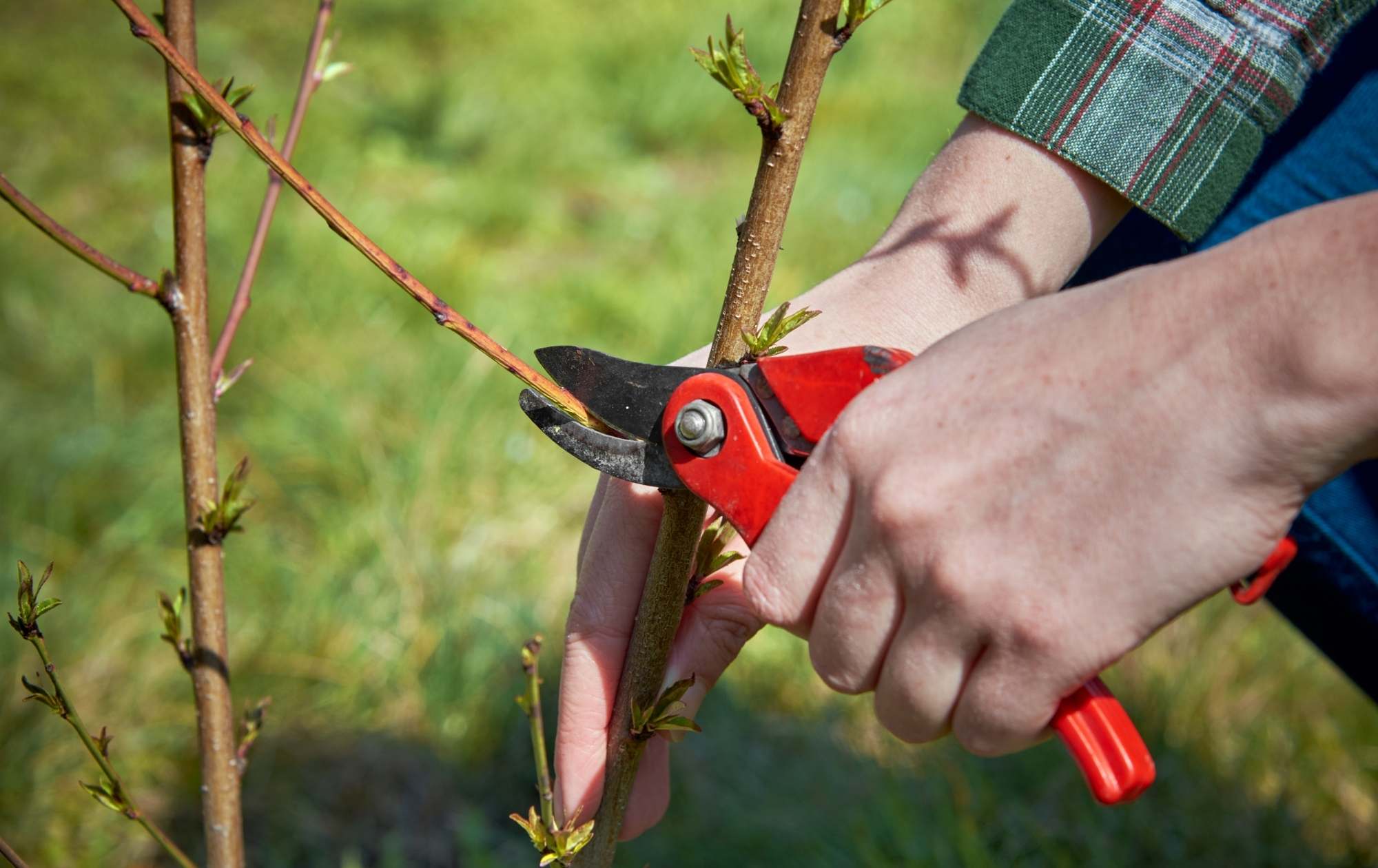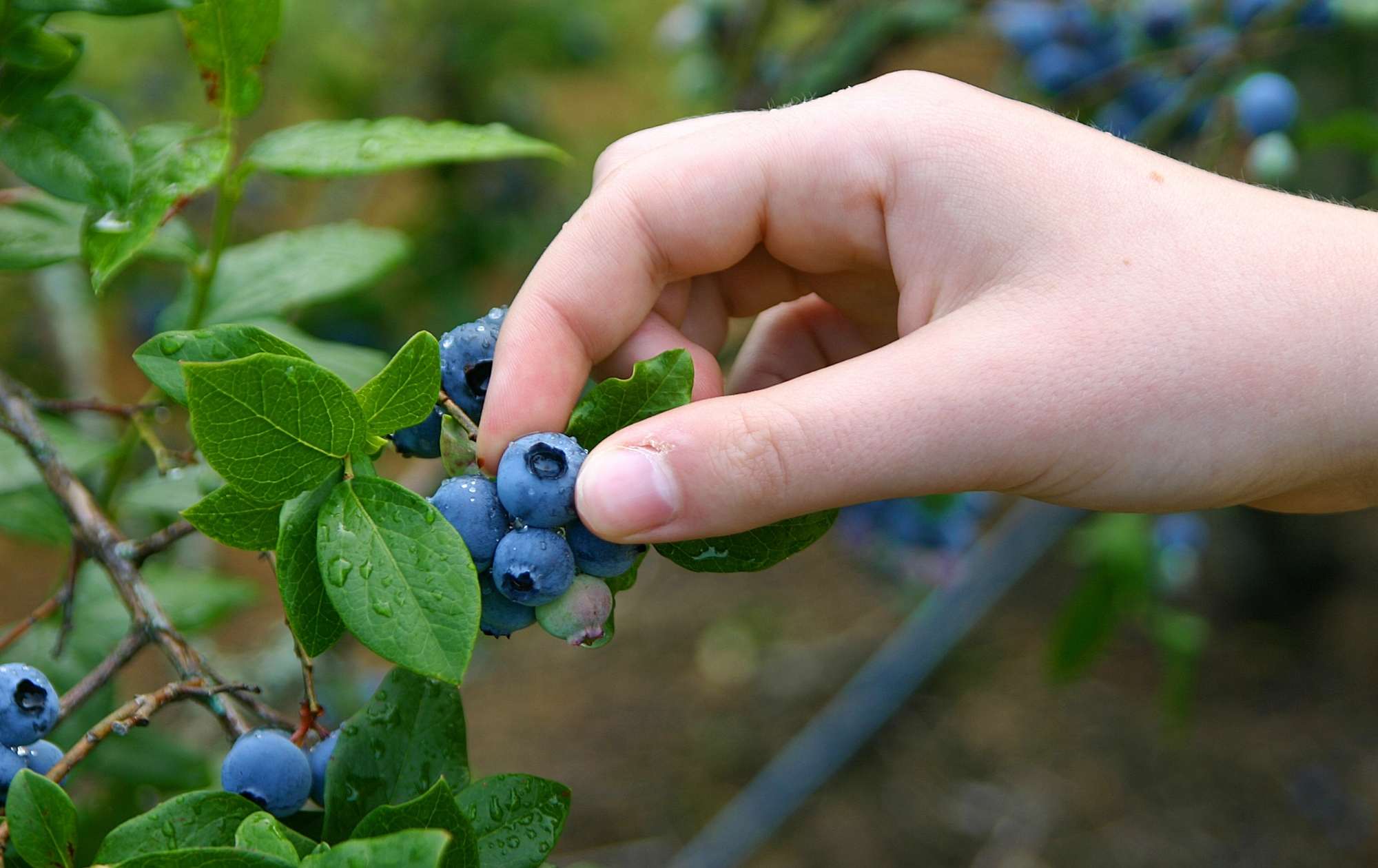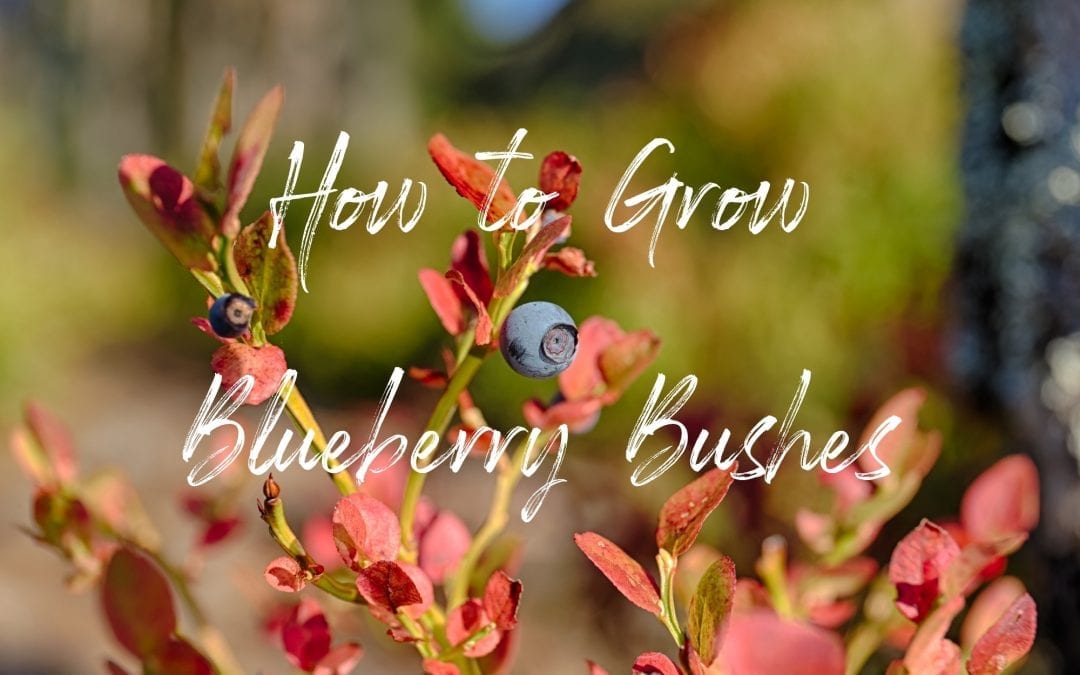Blueberry bushes offer such richness to our gardens, and it’s easy to see why they’re so popular. With a little preparation and some patience, these radiant plants can be garden showstoppers. Blueberries are slow to establish taking 2-3 years to take hold and even longer to reach maturity (8-10 years). But, once you learn about some of the ornamental and health benefits, you’ll know it’s well worth the wait.
How to Plant Blueberry Bushes
We want to help you achieve the most success with your blueberries. These timelines and techniques will ensure your first blueberry harvest is plentiful.
Prepare Your Soil in Fall
All small fruits and berries grow best in soil with high levels of organic matter. Blueberries are no exception. Add fresh compost the fall before planting as this gives it time to work like a slow release fertilizer. They also grow best in lose, well-drained soil. So, tilling-in the compost can help everything integrate well and loosen the soil at the same time.
Fall preparation is key to your blueberry plant’s success. We recommend getting a soil pH tester to understand your soil’s acidity. Blueberries are their happiest and most productive with soil pH between 4.0-5.5. If needed, apply any soil acidifiers (like 3-4 inches of Sphagnum peat moss or the appropriate amounts of elemental sulphur). Like compost, tilling-in these additions ensures they’re well-incorporated and evenly distributed. This process helps the soil achieve its optimal pH of 4.0-5.5 by the time you’re ready to begin planting in the spring.

PRO TIP: There are environmental concerns with the mining of peat moss. Peat moss has been a common tool to acidify soil. But, an increasingly preferred method involves using elemental sulphur. (A more sustainably sourced product than peat moss.) Online sulphur calculators like this one from Garden.org can help you understand how much product you’ll need. But, Platt Hill Nursery’s experts can provide great in-store guidance.
Plant in Spring
By Springtime, the nutrients and minerals from your Fall efforts have started to get released, so your plantings will be off to a great start. Plan a space such that you can plant 2 varieties of blueberries within about 100 feet of each other for cross-pollination. On some varieties, this is a step to improve the crop yields. Meaning: they’ll still produce fruit but not as many as would appear when allowed to cross-pollinate. However, for most varieties of blueberries, adding this diversity is imperative to receive any fruit at all.
What is cross-pollination? Why do blueberries need it?
Cross-pollination occurs when the pollen from a blossom’s stamen on one variety is brought to a blossom’s stigma on a different variety and causes fertilization. This process occurs naturally through pollinators like bees and butterflies. But, the wind, water, and birds can also act to carry pollen from plant to plant. Fertilization allows the blossom’s stigma to turn into a seed. In the case of blueberries, the stamen and stigma mature at different rates. Because this happens, it’s difficult for the plant to self-pollinate and results in fewer fertilizations. So, fewer fertilizations means less fruit on your plant. Adding multiple (or at least two) varieties increases the opportunities for berries to form because pollen on one variety can be ready to fertilize at different times.
Blueberry Plant Care and Pruning
Once planted, your blueberries will require regular watering and annual soil pH monitoring. Plants will need at least 1 inch of water per week during the growing season (March-October). They’ll need about 4 inches of water per week during fruit ripening. Watering is especially important during late summer when the plant is setting buds for the following year’s fruit. Too much water in late summer results in large, bland berries. Conversely, too little water in late summer results in smaller berry sizes.
Managing weeds around your blueberries is important. Because blueberry bushes have shallow roots, they are susceptible to weed competition. Weeds can steal moisture and nutrients from your plantings. If you use a hoe or cultivator to manage weeds around the plants, it’s important to be delicate. Blueberry bush roots can be as little as two inches below the soil’s surface. So, disturbing or cutting them with a tool can cause damage or reduced growth rates. It’s best to pull weeds by hand.
Mulching also helps suppress weeds. Reduce weed competition with a three to four inch-thick layer of pine straw or pine bark. Pine mulches also maintain soil acidity levels as it breaks down.
Fertilizing blueberry bushes is pretty straightforward. In the first year, you won’t need to fertilize. Each year following, before the leaves begin to emerge for the year, apply the recommended amount of a soil acidifier. We recommend a product like Espoma’s Berry Tone.

Pruning is best accomplished in early Spring before the growth starts for the year. In the first year of your blueberry bush’s life, prune the plant to remove the flowers produced in Spring. This encourages the plant to grow more leaves and roots and is a very important step to ensuring a healthy and vigorous shrub in the long term.
It can feel painful to lose your first year’s crop. But, your long-term harvests from your blueberry bush are more likely to meet your expectations.
In the spring of the plant’s second year in your garden, you’ll adjust your pruning efforts. Remove all branches that are weak, crossing, or too low to the ground. If your blueberry bush grew vigorously in its first year, you can allow blooms to remain and fruit. But, if you found that its growth was slow, you’ll want to follow the same pruning process as that in year one. This guide from North Carolina State University helps visualize the pruning process..
Havesting Blueberries

Blueberry bushes will produce fruit on one-year old wood. So, the healthier the stem, the better your fruit will be. It’s most desirable to have several strong one-year old branches, rather than many weak branches.
The blog Farm Flavor recommends to run your hand under the berries. “Ripe berries will fall right off the bush and you can catch them in a basket below. If you have to tug at them – or if they’re still white or pinkish in color – the blueberries aren’t ready for harvest.”
There really isn’t much more to harvesting than the picking process. Fruits don’t require coring, peeling, or pitting. Plus, they freeze and dry well for long-term consumption.
Common Blueberry Bush Pests and Diseases
Blueberry plants don’t have many diseases or pests to be concerned about, but there are a few to consider:
- Birds | While berries are ripening, birds can swoop in and enjoy the literal fruits of your labor. Deterring them is easy with netting, reflective objects, or other specialized tools. Install netting a few weeks before fruit is set to ripen. Metallic pinwheels or hanging up old CDs also work well. The reflected light off of shiny objects will disorient birds and scare them away.
- Rabbits | Winter often brings hardship and desperation for these little animals. Rabbits will eat bark of trees and shrubs, buds, twigs, blackberry and even raspberry canes. Reduce the places rabbits like to inhabit by clearing brush piles and tall grasses. You can also add a barrier fence around your blueberries to help deter mature rabbits, but baby bunnies can fit in as small as a two inch gap. Another option is applying a liquid or granular rabbit repellent. In the summer, rabbits will be most attracted to the berries on your plants. Fencing can be more effective at this time of the year, as the animals will have matured and grown from their baby bunny state. Geraniums and marigolds can also be great companion plantings, as rabbits are deterred by their scent.
- Botrytis | This is one of the most common concerns from Platt Hill Nursery customers. This can make leaves look like they’ve been dusted with a grey powder. That powder is actually a type of mold and is often due to a period of cool, wet weather. Using an organic fungicide spray like Bonide’s Liquid Copper helps beat this blight.
- Root Rot | Root rot is caused by a fungus called Phytophthora cinnamomi. This occurs in waterlogged soils with poor drainage. Symptoms include yellowing or cinnamon-like reddening of leaves and lack of new growth. This disease can be prevented by choosing a planting location with good drainage.
While not a disease, there are also a few symptoms of pH issues with your blueberry plant. If you have light green or red leaves or not much growth in the summer on mature plants it is likely the soil pH is no longer in the ideal range. You can help by adding an organic acid fertilizer such as berry tone. If the pH is too high, you may notice leaf discoloration, slow plant growth, or the plants may die out.
Overall, diseases can be reduced by pruning to allow for better airflow. Airflow reduces the likelihood for diseases to take hold and thrive, as they often need dampness to latch on and reproduce. Also, remove all overripe fruit to reduce disease and pest opportunities.
Why Grow Blueberry Bushes?
The value of blueberry bushes in your garden are hard to beat:
- Delicate white flowers in spring
- Produce health-benefitting fruits
- Bright red fall color
Blueberry bushes have phenomenal ornamental value. In the Spring, bushes come alive with delicate white flowers that are beautiful to behold. In the fall, leaves glow with a bright, rich red color that truly brighten your garden or landscape. These plants can make a great focal point in your garden design.
Superfood Power
You may already be aware that most berries are considered superfoods. But, blueberries offer unique benefits that help them stand-out among their berry peers. The Mayo Clinic reports “blueberries are loaded with compounds called phytonutrients. These may help prevent chronic diseases, such as heart disease, diabetes and some cancers.” The deep blue color of blueberries comes from something called anthocyanin. This is an antioxidant, helping reduce inflammation and support increased immune system function.
Blueberry fruits are a great source of Vitamin C; as little as 3/4 cup of fresh blueberries contains 10.8 milligrams! The US Highbush Blueberry Council cites July 4 as the peak of blueberry season. But opt for a late-season blueberry plant to get an immune system boost right before flu season. Varieties like “Darrow,” “Elliott,” or “Legacy” are late-season varieties, ripening in August or September.
Studies have also shown that those anthocyanins help lower your risk of developing coronary heart disease. “Blueberries have about 25 different anthocyanins. Other berries might just have two or three,” according to Anya Guy, a nutritionist at Mayo Clinic.
The Mayo Clinic reports blueberries may promote healthy aging. The berries may improve short-term memory. Research suggests the compounds found in blueberries may delay the effects of vascular dementia or Alzheimer’s disease.
Maximize Vitamin C and Flavonoids From Your Berries
The top 8 reasons why you should grow blueberry plants:
- Ornamental benefit in your garden from spring flowers
- Ornamental benefit in your garden from fall color
- Eating blueberries is shown to reduce inflammation
-
Eating blueberries increases immune system function. (Due to high Vitamin C content and antioxidants)
- Eating blueberries is shown to lower your risk of developing coronary heart disease
- Eating blueberries may delay effects of dementia or Alzheimer’s diseases
- Phytonutrients absorbed from blueberry consumption may help prevent diabetes and some cancers
- Maximize the amount of Vitamin C and flavonoids in fruits by reducing the time from farm to table
Platt Hill Nursery is Chicago’s premier garden center and nursery.


